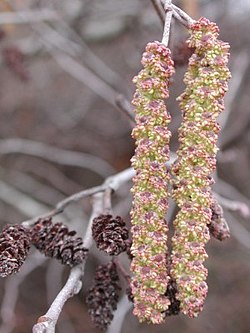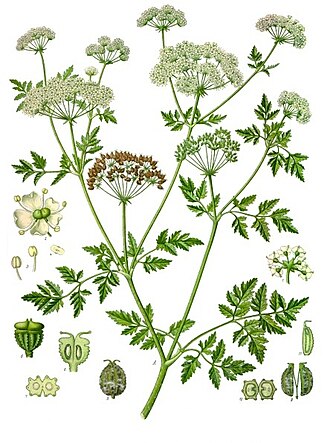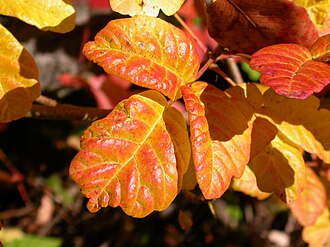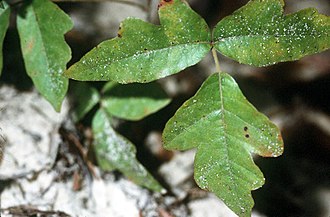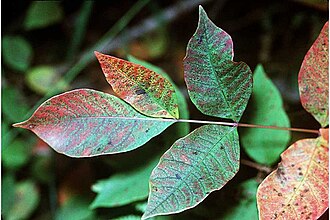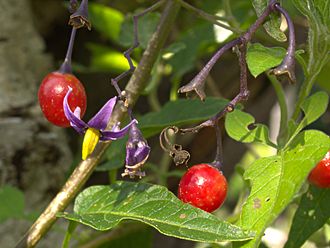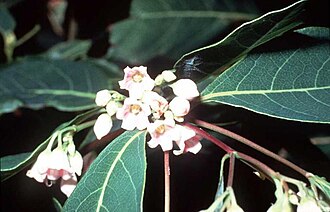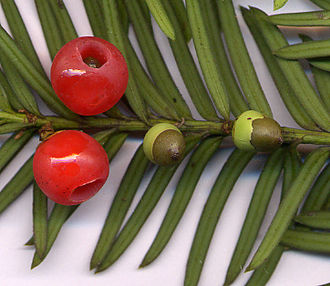Difference between revisions of "AY Honors/Flowers - Advanced/Answer Key"
Jomegat bot (talk | contribs) m (add development stage argument to honor_desc) |
Jomegat bot (talk | contribs) m (ay_prerequisite -> honor_prerequisite) |
||
| Line 9: | Line 9: | ||
}} | }} | ||
== 1. Have the Flower Honor. == | == 1. Have the Flower Honor. == | ||
| − | {{ | + | {{honor_prerequisite|category=Nature|honor=Flowers}} |
== 2. Photograph, collect pictures of or sketch 75 species of flowers. Make a scrapbook from these and correctly label each flower. == | == 2. Photograph, collect pictures of or sketch 75 species of flowers. Make a scrapbook from these and correctly label each flower. == | ||
Rather than finding a specimen and comparing it to thousands of pictures in a Field Guide, the candidate for the Flowers - Advanced honor will need a more systematic approach to field identification if there is ever to be any hope in finding 75 species. The most important tool to the budding botanist is a ''key'', which is a series of questions, the answers to which are mutually exclusive, and lead to another set of questions. See requirement 4 for more details on using a key. | Rather than finding a specimen and comparing it to thousands of pictures in a Field Guide, the candidate for the Flowers - Advanced honor will need a more systematic approach to field identification if there is ever to be any hope in finding 75 species. The most important tool to the budding botanist is a ''key'', which is a series of questions, the answers to which are mutually exclusive, and lead to another set of questions. See requirement 4 for more details on using a key. | ||
Revision as of 02:05, 19 November 2014
1. Have the Flower Honor.
For tips and instruction see Flowers.
2. Photograph, collect pictures of or sketch 75 species of flowers. Make a scrapbook from these and correctly label each flower.
Rather than finding a specimen and comparing it to thousands of pictures in a Field Guide, the candidate for the Flowers - Advanced honor will need a more systematic approach to field identification if there is ever to be any hope in finding 75 species. The most important tool to the budding botanist is a key, which is a series of questions, the answers to which are mutually exclusive, and lead to another set of questions. See requirement 4 for more details on using a key.
Once the Pathfinder has a key in hand, it is time to set out in search of wildflowers. The important thing to remember here is that the term wildflowers covers a lot of different plants, not just the ones with showy blossoms. Many flowering plants bloom for only a short time, and luckily, the blossom (though useful) is not the only indicator of its identity. Wildflowers in the context of this honor are any flowering plants that are neither trees nor grass. This excludes ferns (which do not flower) and mushrooms (which are not plants, but rather, are fungi). This definition does include what most people would call "weeds".
In addition to having a good key, the Pathfinder will also need a camera or a sketch pad. Note that this honor does not require the collection of the plants themselves. In fact, this practice is strongly discouraged, as a troop of Pathfinders in search of wildflowers can quickly eliminate them from a heretofore thriving habitat. If the Pathfinder opts to use a camera, remember that there is no requirement for the photographs to be professional-grade prize-winning entries in an international competition.
Even if the Pathfinder is not a good artist, there is still much value in attempting to sketch a plant. Sketching requires attention to the details, and as the Pathfinder spends time recording these details in the form of a sketch, the information will work its way into the memory. Afterwards, the Pathfinder will be able to look at the sketch - however badly drawn it may be - and recall a vivid image of the plant as it really was.
In spite of this, we still recommend that a good key be taken along in the field and that the Pathfinder attempt to identify the plant while there. Otherwise, the key may ask a question that cannot be answered by looking at the sketches (or even photographs) and the Pathfinder will have no recourse other than to return to the field to gather the required information, or give up on identifying that specimen.
3. Give the distinguishing characteristics of the flowers of each of the 12 common plant families.
Adventist Youth Honors Answer Book/Flower families
4. Prove ability to use plant keys to genus and species.
Identification keys - also called dichotomous keys - are a series of questions which when answered correctly and in the sequence given reveal the identity of a plant (or animal, or any pretty much other thing that naturalists have studied in the past three of four hundred years).
The questions are designed such that they offer two (sometimes more) mutually exclusive answers. The answer selected when using a key will lead to a different question (or to the identification of a species). Naturalists have developed various schemes for identifying the next set of questions.
Many keys are replete with technical terms which can be very confusing to the novice and it is very important to understand all the terminology used in the question before choosing an answer. Luckily most keys will also have a glossary, and ideally, illustrations as well. If you come to a term you do not understand, look it up until you do understand. A key is very much like directions to an unfamiliar place, and the questions are like road signs. If you make a wrong turn, you will end up in the wrong place.
Some keys are better than others, and some strive to use less technical jargon. If you have difficulty with a key, try a different one. Another thing that distinguishes a good key from a poor one is the number of "road signs" given at a particular juncture. For instance, the key may ask if the plant's fruit is red or blue, and you happen to be examining a plant when at a time when it does not bear fruit. Alternative questions help in situations like this.
It is best to have the key in hand when you are examining a plant, as it may very well ask a question that cannot be answered without close examination (sometimes with a hand lens, or even with a microscope). Read all the options presented by the question, as sometimes they are only subtly different. Choose the answer that fits best. If none of the answers seem to apply to the plant at hand, you may have previously chosen an incorrect answer. Backtrack and double check. When the last question is answered, and if all the questions were answered correctly, then the species will be successfully identified. Good keys will end with a detailed description of the plant. It is important to read this description and compare it to the plant you are keying just to be sure it is the right one.
5. Tell the difference between perfect and imperfect flowers. What is meant by pistillate and staminate flowers? Give an example of monoecious and dioecious plants. Tell the difference between monocotyledons and dicotyledons.
Perfect and Imperfect
The terms perfect and imperfect as pertaining to flowers relates to their sexuality. Flowers are the sexual organs of a plant, and they may contain male (stamens), female (pistils), or both parts. A plant is said to be perfect if it possesses both male and female equivalent parts. If a flower has only male, or only female structures, it is said to be imperfect.
Pistillate and Staminate
A flower is pistillate if it possesses only pistils, which are a plant's female reproductive structures. If it possesses only stamens (the male reproductive structures), it is called staminate.
Monoecious and Dioecious

and reduced, sterile stamens with no pollen
A monoecious plant is one that possesses both male and female unisexual flowers on the same plant; from Greek for "one household". Individuals bearing flowers of both sexes at the same time are called simultaneously monoecious. Individuals that bear only flowers of a single sex at one time are called consecutively monoecious. An example of a monoecious plant is the Alder (a shrub).
A dioecious plant is one in which the male and female unisexual flowers occur on different individuals; from Greek for "two households". An example of a dioecious plant is the Holly.
Monocotyledons and Dicotyledons
Dicotyledons, or "dicots", is a name for a group of flowering plants whose seed typically contains two embryonic leaves or cotyledons. Monocotyledons, or "monocots" have a single embryonic leaf.
6. From the Bible point out two spiritual lessons in which writers used flowers for illustrations.
Jesus spoke of the futility of worry:
- Matthew 6:28-30
- "And why do you worry about clothes? See how the lilies of the field grow. They do not labor or spin. 29Yet I tell you that not even Solomon in all his splendor was dressed like one of these. 30If that is how God clothes the grass of the field, which is here today and tomorrow is thrown into the fire, will he not much more clothe you, O you of little faith? - NIV
The Lord caused Aaron's staff to blossom to show that He had set him up as the high priest.
- Exodus 17:8
- The next day Moses entered the Tent of the Testimony and saw that Aaron's staff, which represented the house of Levi, had not only sprouted but had budded, blossomed and produced almonds. - NIV
7. Name and describe eight poisonous plants, noting the particular part of the plant that is poisonous.
Posin Hemlock
Poison Ivy
Western Poison Oak
Atlantic Poison Oak
Poison Sumac
Bitter Nightshade
Dogbane
Yew
8. Do one of the following:
a. Name five plants that are of medicinal value and indicate what part of each plant is used.
Some of these plants may seem familiar as they were also listed in the previous requirement in the "poisonous plant" category. It is curious, though it should not be surprising, that medicinal plants are also considered poisonous. This would be a good opportunity to talk to your Pathfinders about drug abuse.
Any medicine, if taken incorrectly, can poison the body, and that is why it is important to never take medicines unless there is a need for them, and then it is vital to follow the doctor's instructions (or the instructions on the package for over-the-counter medicines). Note that medicinal herbs found in the wild do not come with instructions! We highly recommend that you stress to your Pathfinders that they should never attempt to medicate themselves or others using these plants, as it can be very dangerous or even fatal!
Poison Hemlock
Poison hemlock has been used as a sedative and for its antispasmodic properties. It was also used by Greek and Persian physicians for a variety of problems, such as arthritis. However, it wasn't always effective as the difference between a therapeutic and a toxic amount is very slight. Overdoses can produce paralysis and loss of speech being followed by depression of the respiratory function and then death.
Poison Ivy
Extremely dilute forms of poison ivy are used in homeopathic medicine, most often as a remedy for musculoskeletal complaints with progressive stiffness that worsens with cold, wet, or inactivity and improves with motion, warmth, and use. The patient may have a red tip of the tongue or a red triangle on the tongue, herpetic outbreaks, and itchiness that improves with very hot water.
Bittersweet
Bittersweet is used in homeopathy and herbalism. Its main usage is for conditions that have an impact on the skin, mucous membrane and the membrane (synovial membrane) around the joints. Bittersweet is considered by some to be a herbal remedy for treating herpes and allergies.
Dogbane
Dogbane was used in herbal medicine to treat syphilis, rheumatism, intestinal worms, fever, asthma, and dysentery. Although the toxins from the plant can cause nausea and catharsis, it has also been used for slowing the pulse.
Pacific Yew
The Pacific Yew Taxus brevifolia, native to the Pacific Northwest of North America, and Canada Yew Taxus canadensis are the sources of paclitaxel, a chemotherapeutic drug used in breast and lung cancer treatment and, more recently, in the production of the Taxus drug eluting stent by Boston Scientific.
b. Name ten wild plants that are edible in root, stem, or leaf.
Adventist Youth Honors Answer Book/Camping/Ten edible wild plants
c. An option from requirement 6 of the Flower Honor not completed for that Honor.
We restate the requirements here for your convenience, but for instruction, we ask you to go to the entry on the Flowers honor.
- a. Arrange, draw or photograph a series of at least six flowers showing in order the colors of the rainbow: red, orange, yellow, green, blue, violet.
- b. Submit fresh, pressed or dried flowers which have: five petals, four petals, three petals, no petals.
- c. Distinguish and name two out of five wild or cultivated flowers by their odor, while blindfolded.
- d. List flowers that you have observed being visited for food by the following:
- 1. Birds
- 2. Honeybees
- 3. Bumblebees
- 4. Butterflies
- 5. Moths
- e. Watch a flower for at least ten minutes in the sunshine, and at least ten minutes after dusk, and report on insect visitors. State the number and kind of visitors and name of flower.
